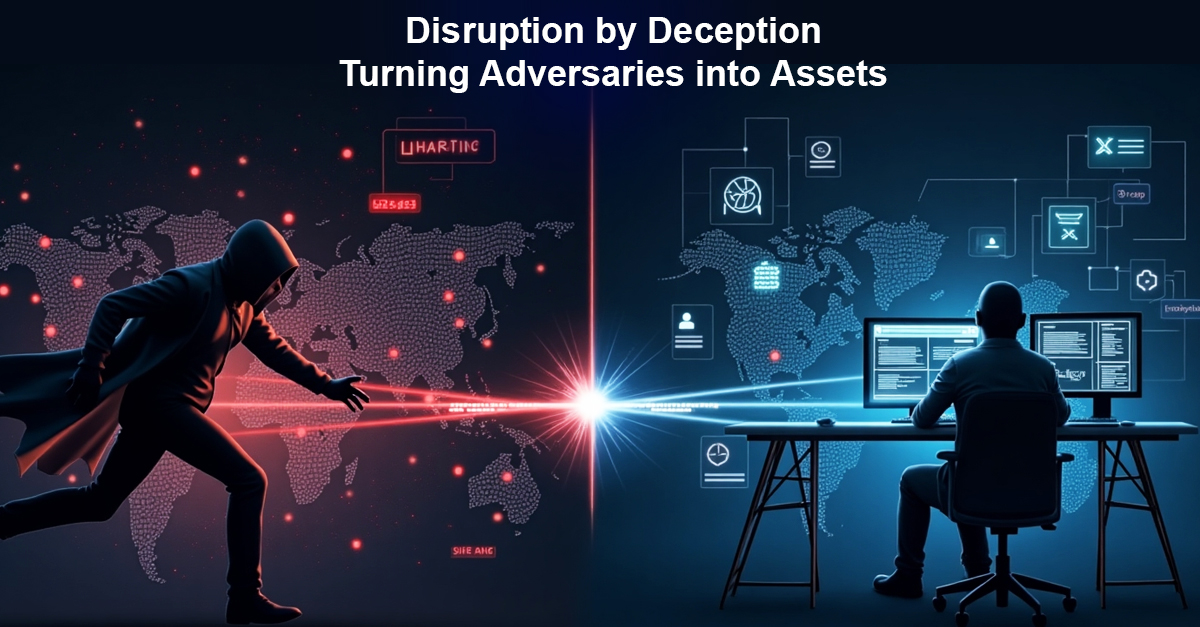
What if every intrusion attempt on your network could actually help improve your defences? For a growing number of CISOs, that’s not a hypothetical—it’s a strategy.
In the age of persistent threats, reactive security measures are at times inadequate. The speed and complexity of today’s cyberattacks demand a different approach – one that doesn’t just detect and respond, but actively manipulates and misleads attackers.
Deception technology is fast emerging as a strategic tool for CISOs, providing a proactive approach to cyber defence.
The Power of Adversary Engagement
Deception shifts the paradigm from passive detection to active defence. It plants realistic, interactive decoys – fake credentials, servers, applications and data – across the network. These assets are invisible to legitimate users but alluring to intruders.
The result? When attackers engage with deceptive artifacts, security teams gain a real-time alert with minimal noise. More importantly, it opens a rare opportunity: to observe, analyze and even influence adversary behavior inside a controlled environment.
This isn’t just defence—its intelligence gathering.
Visibility like Never Before
Traditional security tools often struggle with alert fatigue and false positives. Deception cuts through the noise. Every interaction with a decoy is a high-fidelity indicator of compromise—because there’s no legitimate reason for it to happen.
This level of clarity provides CISOs with a valuable asset they often need: confidence
- Confidence in knowing when an attacker is present
- Confidence in the telemetry being collected
- Confidence in how the threat is unfolding
Deception doesn’t replace existing EDR or SIEM—it makes them smarter by feeding them context-rich data that might otherwise be missed.
Using Adversaries as a Learning Tool
When a breach attempt occurs, most organizations rush to containment. Deception offers an alternative: contain and study.
By letting adversaries “interact” with deceptive assets, CISOs gain:
- Insight into attacker objectives
- Discovery of new TTPs (Tactics, Techniques, Procedures)
- Awareness of lateral movement patterns
- Clues into targeting logic or exfiltration methods
This intelligence feeds back into broader threat modelling efforts and helps security leaders refine their defences based on how attackers actually behave—not just how we think they do.
In this way, every intrusion becomes a chance to get stronger.

Strategic Value for the CISO
Deception isn’t just about catching threats. It’s about aligning security with business resilience. Here’s how Deception, delivers value at the leadership level:
- ✅ Reduced Time to Detect (TTD) and Time to Respond (TTR)
- ✅ Lower SOC workload through higher-fidelity alerts
- ✅ Increased attacker cost and uncertainty
- ✅ Compliance and reporting enhancement through better incident evidence
- ✅ Competitive differentiation—especially in regulated industries
And because deception operates with minimal deployment and minimal tuning, it offers a high return on investment without a massive operational overhead.
Implementation Considerations
Not all deception platforms are created equal. For CISOs evaluating the landscape, here are key questions to ask:
- Can it scale across hybrid or cloud-native environments?
- Does it integrate with existing SIEM, XDR, or SOAR tools?
- How realistic are the decoys—and can I tailor them to my environment?
- What’s the learning curve for my SOC team?
- Does it offer threat intelligence enrichment?
Choosing the right platform isn’t just a technical decision—it’s a strategic one.
Conclusion: Turning Intrusions into Intelligence
As attackers evolve, so must the defenders. Deception technology offers a distinct advantage by disrupting adversaries and improving situational awareness. For CISOs, it’s no longer just about stopping threats…it’s about outsmarting them.
Disrupt through deception. Turn adversaries into assets. And make every engagement an opportunity to sharpen your defence.

Comments are closed